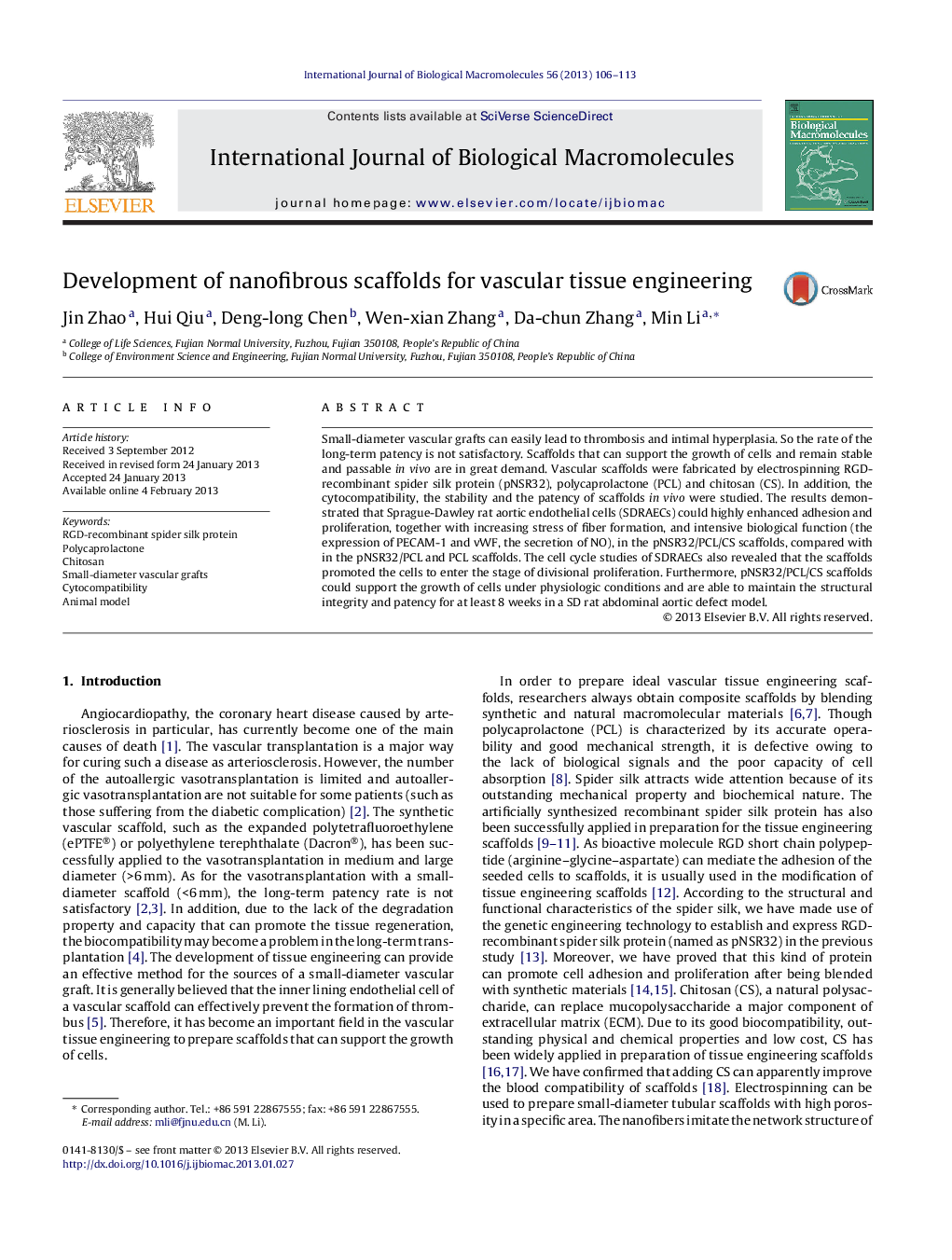| Article ID | Journal | Published Year | Pages | File Type |
|---|---|---|---|---|
| 8333844 | International Journal of Biological Macromolecules | 2013 | 8 Pages |
Abstract
Small-diameter vascular grafts can easily lead to thrombosis and intimal hyperplasia. So the rate of the long-term patency is not satisfactory. Scaffolds that can support the growth of cells and remain stable and passable in vivo are in great demand. Vascular scaffolds were fabricated by electrospinning RGD-recombinant spider silk protein (pNSR32), polycaprolactone (PCL) and chitosan (CS). In addition, the cytocompatibility, the stability and the patency of scaffolds in vivo were studied. The results demonstrated that Sprague-Dawley rat aortic endothelial cells (SDRAECs) could highly enhanced adhesion and proliferation, together with increasing stress of fiber formation, and intensive biological function (the expression of PECAM-1 and vWF, the secretion of NO), in the pNSR32/PCL/CS scaffolds, compared with in the pNSR32/PCL and PCL scaffolds. The cell cycle studies of SDRAECs also revealed that the scaffolds promoted the cells to enter the stage of divisional proliferation. Furthermore, pNSR32/PCL/CS scaffolds could support the growth of cells under physiologic conditions and are able to maintain the structural integrity and patency for at least 8 weeks in a SD rat abdominal aortic defect model.
Related Topics
Life Sciences
Biochemistry, Genetics and Molecular Biology
Biochemistry
Authors
Jin Zhao, Hui Qiu, Deng-long Chen, Wen-xian Zhang, Da-chun Zhang, Min Li,
